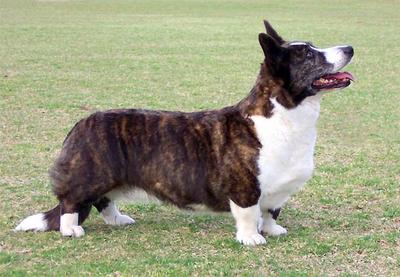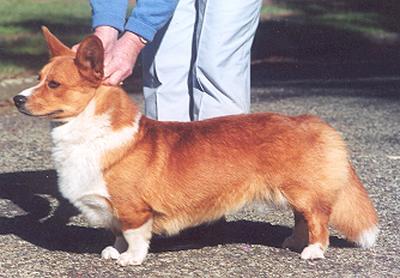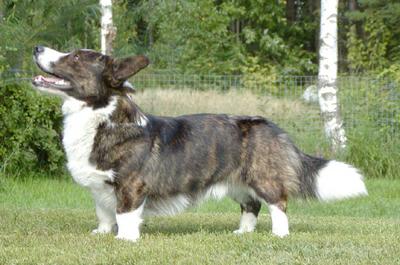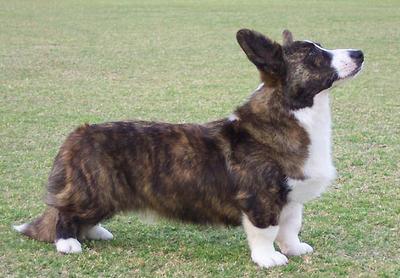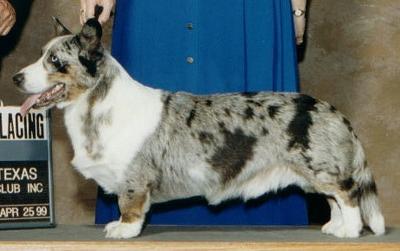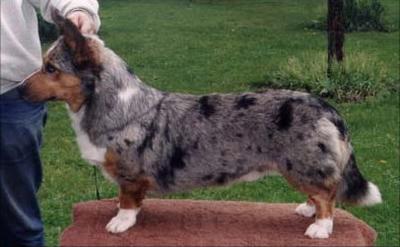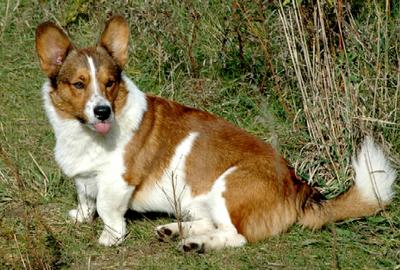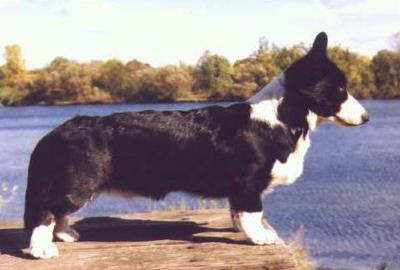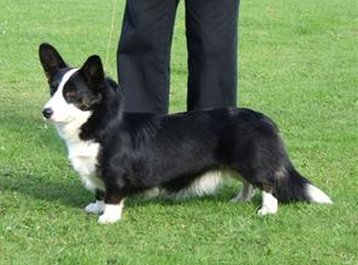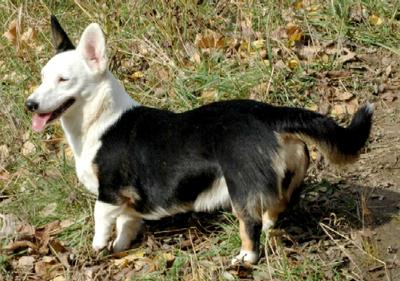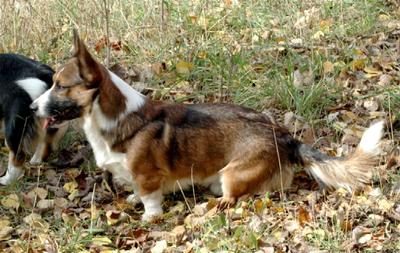|
|
|
|
Short-medium weatherproof coat which closely follows the contours of the body. This coat has minimal furnishings on legs, a short, thick neck ruff and thick, tight tail brush. It is water-repellent and has a very dense undercoat. |
Short, hard and glossy weatherproof coat with minimal furnishings, but concealing dense undercoat. Also has a wave along the top. Note that this is slightly tighter (marcelled), which is what you would expect with a rougher texture to the coat Good tail brush. |
|
|
|
|
3a Another short-medium length coat with adequate furnishings and good tail brush. Weatherproof, tight and with good undercoat. |
Coat medium length and slightly softer and more luxuriant than those preceding but still acceptable and providing good protection from the elements. |
|
|
|
|
Medium length, firm textured coat with minimal furnishings, good undercoat and tail brush. Shows a slight wave in parts, which does not affect weatherproof qualities. |
This blue merle male has a correct dense weatherproof
coat. His double coat is medium in length and provides the proper
texture with the outer hairs slightly harsh. The undercoat is softer
and this coat is thick to insulate. His ruff has longer hairs but he
could use more furnishings at the back of his thighs to create
"pants". |
|
|
|
|
This dog's coat is slightly shorter than what would be favored, but has correct furnishings on the neck and backs of rear legs. Texture is
slightly soft, but is still harsh enough to be weather resistant. Fit of coat over the withers merges
smoothly into the body over a correct shoulder and the lines in the coat on the shoulder outline this
structure. |
A good medium coat, with visibly harsh guard hairs. |
|
|
|
| This dog has a medium length, double coat with correct furnishing on neck and back of rear legs. Texture is harsh without being wiry and it is weather resistant. There is some slight marcelling on the topline at the withers and over the tailset which are in part an inherited trait. This dog also has a high natural tailset and carriage which causes the coat over the croup to develop a wave or curl. | 16 month old brindle point tri, appears black and white but note small brindle areas on cheeks and legs. The collar is pulling the neck coat up which actually shows the longer and thicker hair at the ruff. The body coat is of medium length with adequate underbody furnishing and brush. |
|
|
|
|
This is a close, hard coat. It appears short in the photo, but is of excellent length and undercoat to the hands. The tail shows that the coat is not scanty. |
Same comments as for photo on left, although this is a very slightly longer coat |
|
|
|
|
The
correct double weather
resistant coat
of the Cardigan Welsh Corgi provides a soft undercoat for insulation,
and a harsher outer coat to repel the elements of nature, rain, briars,
etc. These pictorial examples are only meant to help visually, but one
can only determine correct coat texture by evaluating with a thorough
“hands on examination". |
|
